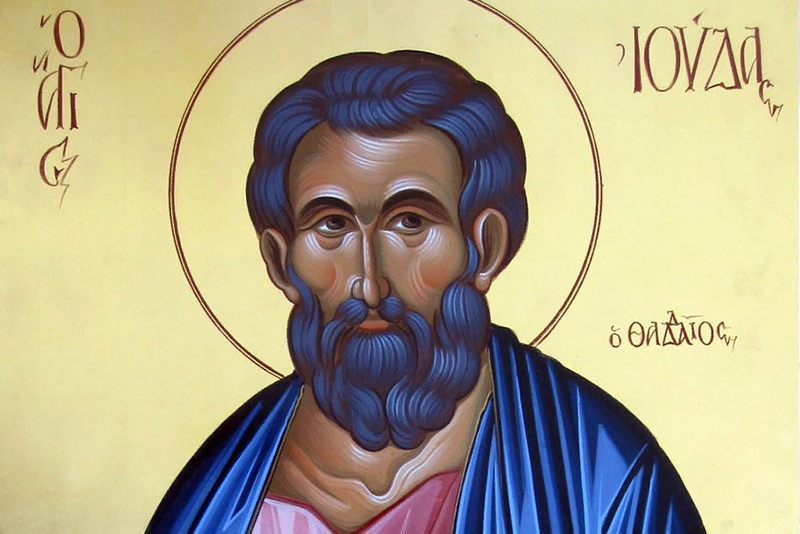
On December 30, the church celebrates the memory of St Andrew the First-Called, one of the holy apostles. According to a tradition, St Andrew has founded the Church of Constantinople. Is that really so and how ancient is that tradition? Why was there so little information about this tradition until the 9th century? Where did St Peter’s elder brother preach?
Acts of St Andrew
Possible places where the Apostle Andrew taught after the Ascension of Christ are reflected in two parallel traditions. The first tradition goes back to an earlier legend, recorded in the apocryphal Acts of St Andrew, dating back to the middle of the second century. It is worth stressing the apocryphal nature of that source, whose content and theology are very far from Christianity and can be best described as gnostic. While condemning marriage, it makes no mention whatsoever of the Death and Resurrection of Christ, i. e. the main focus of the apostolic teaching. According to that text, Andrew begins his sermon on the southern coast of the Black Sea, moving west through the provinces of Pontus and Bithynia. Having visited the major cities, the apostle goes to Byzantium (future Constantinople), preaches in Thrace, Macedonia and Achaea, performing numerous miracles. St Andrew dies in Patras, where he is crucified on a crux decussata (diagonal cross). According to the other apocrypha, Andrew’s martyrdom takes place in a certain “city of cannibals” Myrmidon, which in a few centuries will be identified with Sinope (modern Sinop in northern Turkey).
Alternative Tradition
Another tradition is introduced by Eusebius of Caesarea (Church History 3, 1). Eusebius himself quotes Origen (Commentaries on Genesis, 3), who argued that Asia Minor, Pontus and Bithynia were the lot of St Peter, while St Andrew was destined to preach in Scythia. That tradition took root in the so-called apostolic lists, which were common in Syria in the 4th century. In the early versions of these lists, the area of Andrew’s mission included all peoples related to the Scythians: Sakas, Sogdians and Sarmatians. In later editions (list of Pseudo-Epiphanius, eighth century; list of Pseudo-Dorotheus, ninth century), the sermon of St Andrew in Scythia began to conjoin with his mission in Pontus and Bithynia, and the appointment of Bishop Stachys in Argyropolis (a suburb of Byzantium). Finally, in the first half of the ninth century, all the apocrypha and legends associated with the Apostle Andrew were creatively reworked by Epiphanius the Monk, who personally travelled to the alleged places of Andrew’s sermon, collecting oral and written legends about him and eliminating obviously fantastic and implausible details.

St Andrew and the Politics of Constantinople
That later version of the apostle’s hagiography, embracing the at times apocryphal information, which was already known, emphasized Andrew’s role in establishing the episcopal see of the minor city of Byzantium, which later became the capital of the Christian Roman Empire. That was done quite deliberately, in response to the ecclesiopolitical realities of that time. The Roman Church, which has always affirmed the founding of its see by the preeminent apostle Peter, used that well-established universal tradition as an argument in upholding its seniority and even superiority over other churches, in particular over New Rome. Moreover, the canonical precedence order of the churches, enshrined in the canons of the Nicene Council, declared the advantages of Rome, Alexandria and Antioch. From the Roman point of view, the supremacy of these churches was based on them being the See of Peter, that is, the Apostolic See. The Church of Constantinople enjoyed its authority exclusively for political and practical reasons, as the city of the emperor and the senate.
Realizing the obvious weakness of such a position and led by the desire to give the weight of apostleship to their throne, the primates of Constantinople revived the ancient legends about it being founded by the Apostle Andrew, who also led to Christ his younger brother, the most supreme Cephas. In the eyes of the Byzantians, that was a weighty argument in polemics with Old Rome. On top of that, according to Professor Anton V. Kartashev, it helped the Byzantine Church ensure its superiority over all the Eastern churches: “Byzantium willingly supported the legends about the Apostle Andrew’s preaching in the countries where they existed (Georgia, Armenia) and even tried to instill similar traditions in the northern countries (Moravia, Russia), to which their influence extended”(Essays on the History of the Russian Church, vol. 1).
We can conclude that despite the rather early mentions (II and III centuries) of the Apostle Andrew’s missionary travels in Scythia, Thrace and other areas around the Black Sea, also mentioning him as the founder of the see in Byzantium, that data should be treated with a certain degree of caution, as originating from apocryphal sources. We should also bear in mind the unique rules of compiling the lives of the apostles, which can go through multiple revisions and, in the final form, be a synthesis of several earlier hagiographic versions. And yet, the tradition of the Byzantine See being founded by St Andrew has become established in church hagiography, while the possible reasons to question them can hardly be considered too serious.




